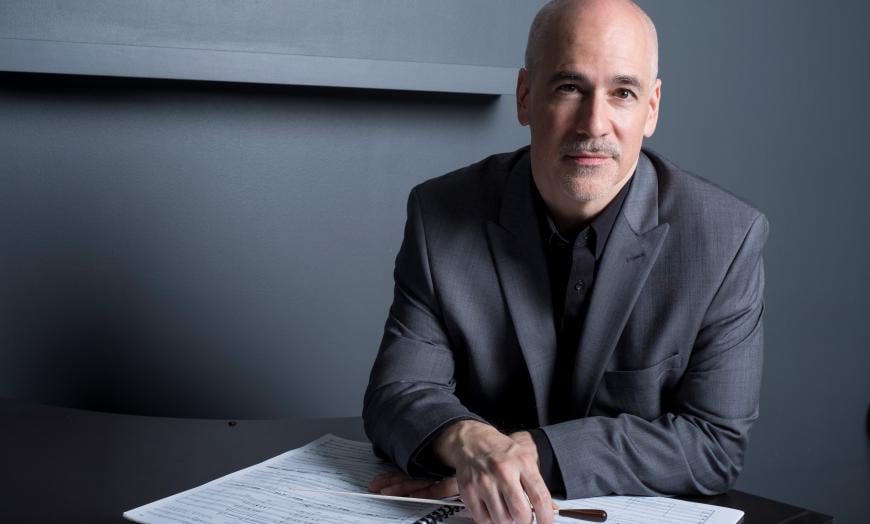
It is rare for a new piece of classical music to receive its world premiere on national television. It is rarer still for that telecast to be on C-SPAN.
Yet that’s exactly what happened with Fanfare for Tomorrow, which Southern California-based composer Peter Boyer wrote for the inauguration of President Joe Biden in 2021.
“I asked if I could come to Washington and be at the inauguration, but because of the pandemic, and the increased security after Jan. 6, there was no way,” Boyer, 53, recalled in a recent interview. “So I’m home on Inauguration Day. I was going back and forth between C-SPAN and CNN with my remote control. On C-SPAN, they announced we would be hearing three pieces, and mine was the third. But then they cut to Biden’s arrival at the Capitol. They were talking, of course, but in the background I heard my piece as it was played on the west lawn of the Capitol.
“Later I saw an official feed that allowed me to hear it without the hosts’ voice-overs. In that version, which is on YouTube, you see the Biden and Harris limos arriving. There’s a modulation halfway through the piece. It goes up a whole step at a dramatic moment. Precisely at the moment Biden’s car door opens for him to come out, the modulation happens. People were sending me messages asking, ‘How did you time that? It was perfect!’”
Boyer’s career has not always enjoyed that level of perfection. Although Elmer Bernstein was one of his teachers (as was John Corigliano), he has yet to have the opportunity to fulfill his goal of writing a film score. For another, some of the highest-profile big-budget American orchestras — including those of New York, Chicago, and Los Angeles — have yet to perform his music, which is more accessible than edgy.
But with four recordings of his music released to date, all on Naxos, and the great success of Ellis Island, his work for actors and orchestra, which was telecast on PBS, Boyer has enjoyed enormous success, with commissions rolling in at a rate that would be the envy of many colleagues. He talked about his music, including his Symphony No. 1, which the Mission Chamber Orchestra of San José will perform April 15 in Cupertino, in an in-depth interview, which has been lightly edited for clarity and concision.
Let’s begin by talking about your First — and, to date, only — Symphony. It was commissioned a decade or so ago by the Pasadena Symphony, correct?
It’s astonishing to me that it has been a decade — although the pandemic has altered our perception of time, hasn’t it? I wrote the piece in 2012 and 2013. The stars kind of aligned for that particular commission at that particular moment. I was composer-in-residence for the 2012–2013 season. I have had a longtime relationship with [Orange County’s] Pacific Symphony; this was an opportunity to have a relationship with the orchestra that is geographically closest to me [in Pasadena].
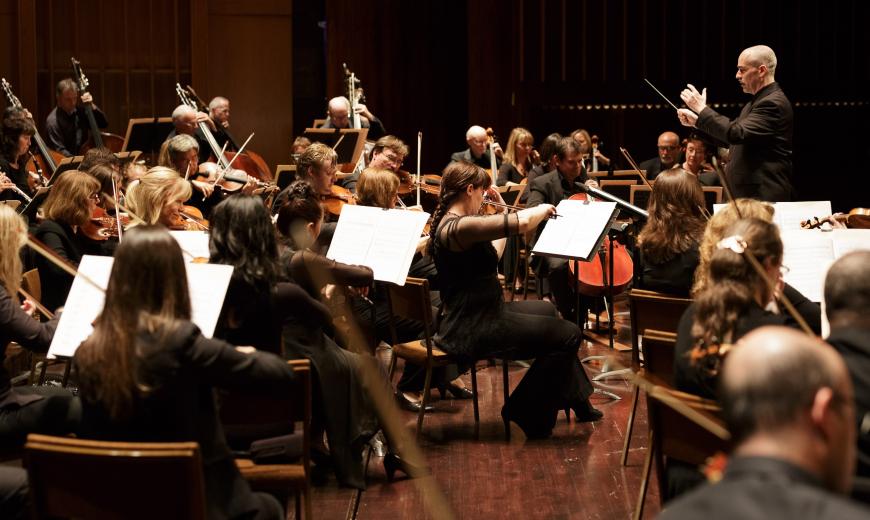
I have done many commissions for specific purposes — often celebratory, sometimes historical. This was a rare commission in which I wasn’t asked to do anything in particular. I was simply given a length: 23 to 25 minutes. It’s not Mahlerian by any means.
I ultimately chose a three-movement form. I didn’t realize until I was well into the piece that the structure had a similarity to the first symphonies of both [Aaron] Copland and [Leonard] Bernstein in that it more or less consists of a slow movement, a fast movement, and then another slow movement, the third movement being the longest. I had begun sketches for a fourth movement, but eventually I realized the symphony would work fine with three movements; I could write an uplifting ending using the slow material I had been working with.
The piece has had 17 or 18 performances. The orchestras that have programmed it have mostly been smaller-budget orchestras like the Mission Chamber Orchestra. I’m not precisely sure why it worked out that way, but it’s nice to have it performed, and I’m glad it’s being performed in the Bay Area.
You wouldn’t object if the Los Angeles Philharmonic asked you about it, though, right?
[Laughs.] I have had performances by the Hollywood Bowl Orchestra, but the LA Phil remains on my wish list. Obviously, they have an enormous commitment to new music, but they tend a little bit more toward less overtly traditional orchestral music.
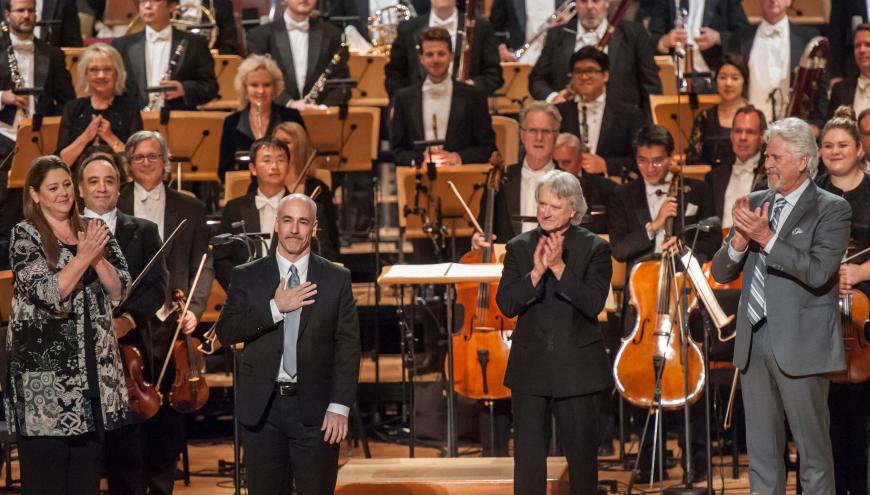
A lot of your music is — is “patriotic” the right word?
I never describe my music as patriotic, but others have described it that way. In searching for a better term, I have come up with “American-themed.” I think that’s more accurate. My music tends to be optimistic, but it’s not solely optimistic. The piece that set me on this path, and led to so many commissions, was Ellis Island. I wrote that piece because, as a kid, I grew up with an almost mythic reverence for the Statue of Liberty and what it meant. Calling it a patriotic piece oversimplifies what it is.
Let’s put it this way: A lot of your music celebrates American values and moments when we have upheld those values. Is it harder to write that sort of music in times like these, when the country seems to be tearing itself apart?
Yes. It is a difficult time in our country, and it’s painful to read the news every day. Our times are so divisive and so depressing in some ways. But I still feel music can be a vessel for optimism and uplift. Maybe my ability to write that kind of music in a natural way, without it feeling forced, allows me to help in some small way.
I guess my own personality tends toward a musically optimistic approach. That reflects the music I grew up with — the works that defined American music for me. The three composers I often cite are Copland, Bernstein, and John Williams. I have spent a lot of time studying their music, and that has flowed into the bloodstream of the music I write and led to commissions that are celebratory in nature.
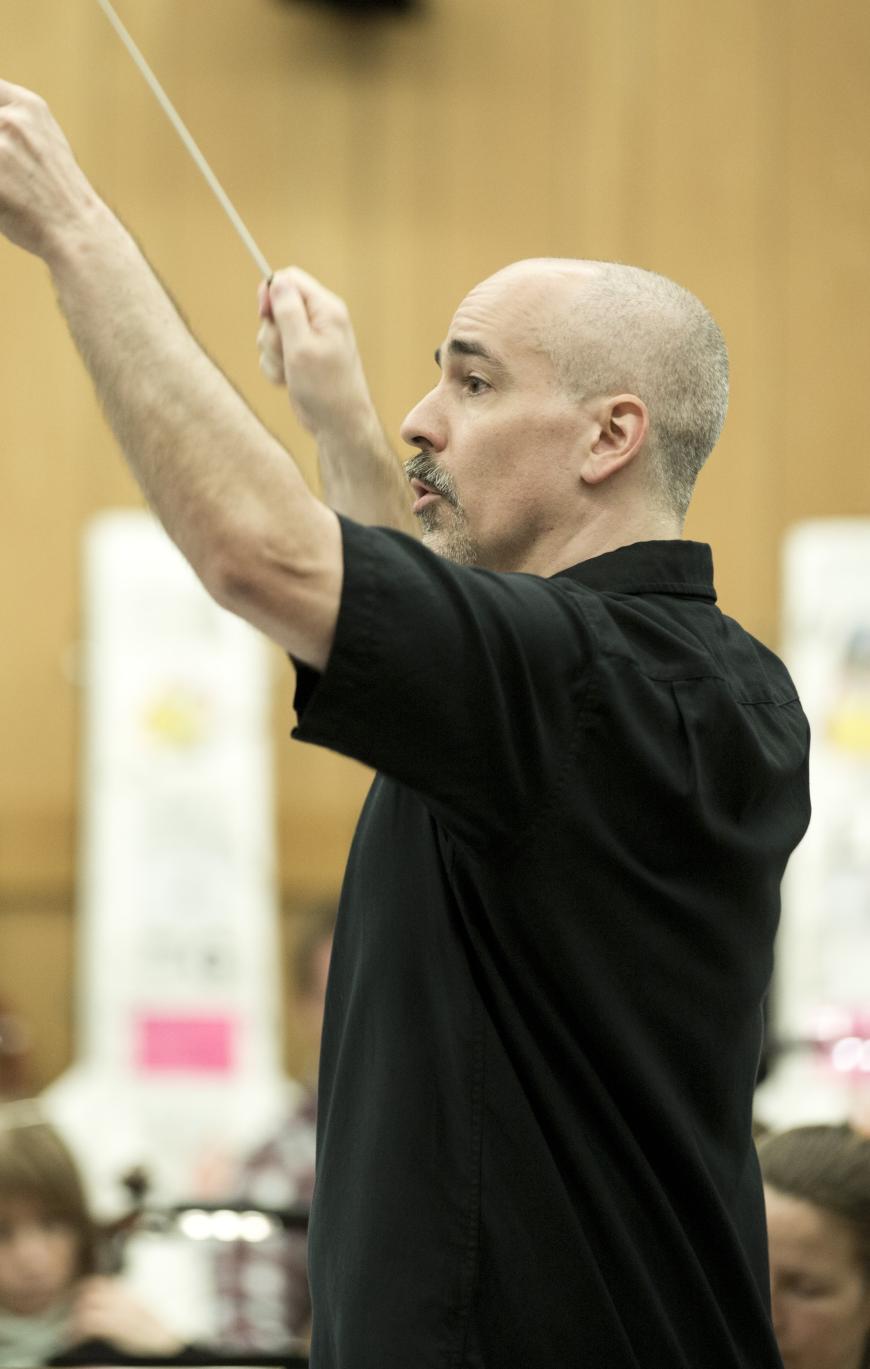
I sense the spirit of Lenny hovering around your symphony, particularly the middle-movement Scherzo.
For sure. One of the things I have loved, admired, and absorbed about a lot of Bernstein’s music is his facility with unusual mixed meters. He loved four-plus-three. I wrote that movement in nine-plus-four. It literally arose when I was on the elliptical machine burning calories. The rhythm kind of popped into my head. It’s not exactly Bernsteinian, but there’s a lot of music in his Mass that has that kind of mixed-meter thing.
I have trouble picturing Bernstein on a piece of exercise equipment. Ever meet him?
No. I have become quite friendly with Jamie, his eldest child. I only saw him perform once, at what turned out to be his last concert. It was at Tanglewood in August 1990. I was a 20-year-old student at Rhode Island College. I had gotten bitten by the Bernstein bug around age 18, and I wanted to see him. So I bought these tickets as soon as they went on sale in the spring. They were second-row seats. I remember well how scary it was to see the shape he was in. He was so sick and was coughing so much he had to stop in the middle of Beethoven’s Seventh Symphony. He was gasping for breath. It felt surreal.
The assistant conductor who stepped in to conduct Bernstein’s own Arias and Barcarolles, in a new orchestration by Bright Sheng, was Carl St. Clair. He ended up becoming a good friend and having an important impact on my life; he conducted my Ellis Island for the PBS telecast.
I met Jamie Bernstein at a performance of Mass in Dallas 20 years ago. As I was writing my [First] Symphony [a decade later], it seemed appropriate to dedicate it to the memory of Leonard Bernstein. I told Jamie I’d only do that if it was supported by the family. She spoke with her siblings and then got back to me, saying they’d all be pleased if I would do that. So I have a very nice connection to the Bernstein family.
On the subject of both patriotism and surreal experiences, talk about the fanfare you wrote for President Biden’s inauguration.
I had composed a piece for the U.S. Marine Band in 2018 called Fanfare, Hymn, and Finale. When the election was called for Biden in 2020, I sent Jason Fettig, the director of the band, an email, saying half-jokingly, “If you need a piece for the inauguration, let me know.” He responded a few days later, saying, “We might.”
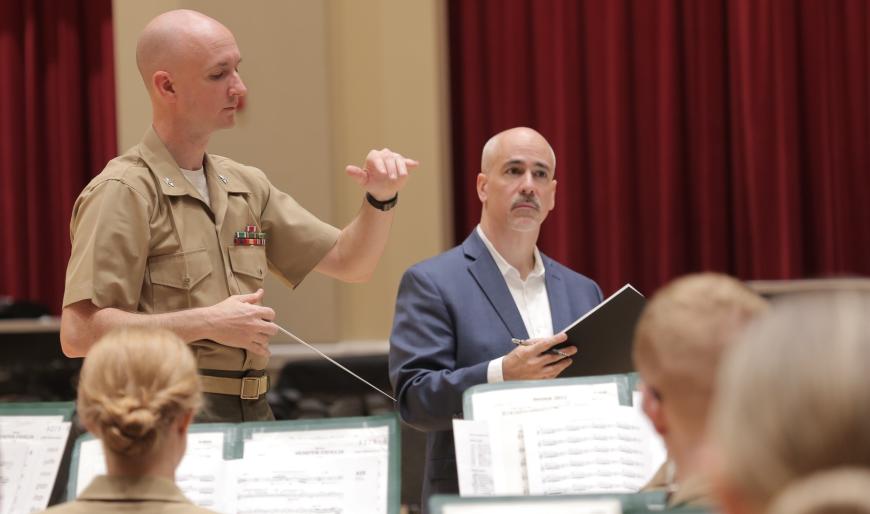
Because of the pandemic, there was a lot of uncertainty about how the inauguration was going to work. On New Year’s Day 2021, I woke up thinking, “This has got to be a better year than 2020.” I checked my email, and it was Jason Fettig saying, “We’re on. We’re going to have four new pieces, and we want you to write one.”
I had written a one-minute fanfare for solo horn that had been commissioned by the Cincinnati Symphony during the pandemic — pieces for their players to play in their homes [while concert halls were closed]. I felt that had a lot of potential, so I sent it to Jason and said I’d like to expand it for this occasion. He said, “Great — do it.” So I did that over the next 10 days — the shortest timeline I have ever had for a commission.
More recently, you have written a piece for another stately occasion, the coronation of King Charles III. I would have thought that assignment would have gone to a British composer.
The piece was commissioned for a “Coronation Celebration” concert, so it’s not one of the official commissions from the king himself. I believe there are a dozen or so of those, all from British or Commonwealth composers. The concert is May 3, three days before the coronation. It features a wonderful group called the ORA Singers, led by Suzi Digby. I was told that for this particular commission, which will close a concert of music from coronations and other royal occasions across 400 years, they wanted a new piece from an American composer, partially to celebrate the British-American relationship.
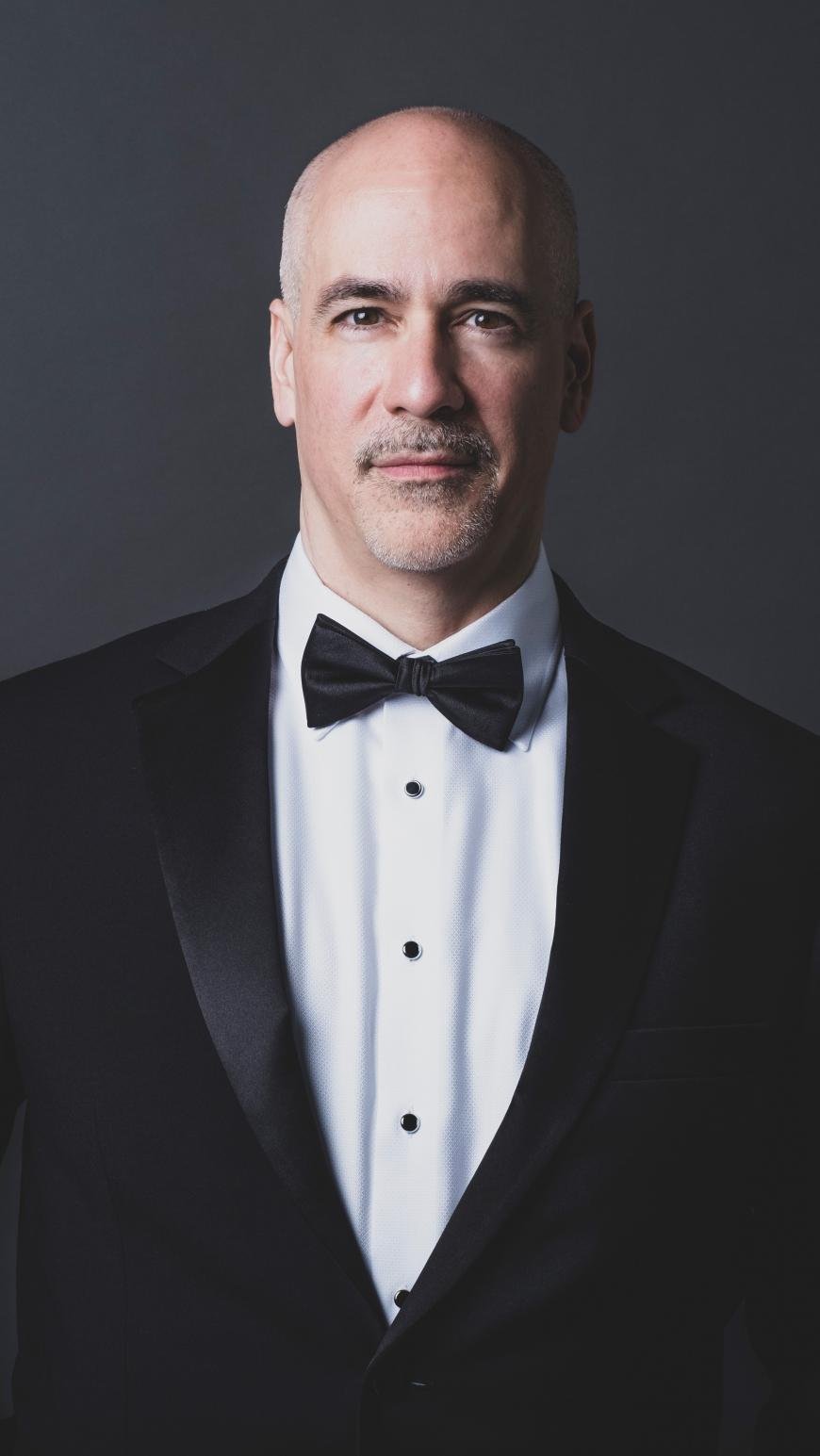
I immediately started listening to the ORA Singers’ recordings. It’s a relatively new group, but they make up the cream of the crop of London’s choral singers, so they’re wonderful. They wanted some grandeur to it, so I suggested brass quintet and timpani as well as 18 singers. I only got the commission the second week in February, and I was busy completing a rhapsody for piano and orchestra, which I’d been working on for a long time. So I only started this piece within the last few weeks. Fortunately, it’s only six minutes.
Is your new rhapsody an homage to George Gershwin?
It was commissioned by pianist Jeffrey Biegel, who has commissioned many American composers over the last 25 years or so, including Ellen Taaffe Zwilich and William Bolcolm. He wanted to celebrate the centennial of Gershwin’s Rhapsody in Blue, which will be in 2024. Then he wanted to play both pieces around the country. At first, I said no — how can I write a piece that would stand alongside Rhapsody in Blue? But he kept after me.
I ended up spending eight months writing this 17–18-minute piece. The premiere will be given by the Utah Symphony as the opening night of the Deer Valley Music Festival on June 30. As of today, 39 orchestras in 36 states have committed to perform the piece. It’s crazy. That’s all Jeffrey. He’s indefatigable. His goal is to do it in all 50 states.
My biggest question in writing it was to what extent was I going to try to reflect Gershwin’s style. His language is not my language. In the end, the piece is in one big movement made up of multiple sections, one of which I call the “bluesy scherzo.” It doesn’t sound just like Gershwin, but it’s a tip of the hat to him.
Let me conclude with yet another loaded term: “cinematic.” I read a quite positive review of your symphony calling the final movement cinematic. Is that description fair?
I think my music in general is influenced by both cinema music and concert music. Making my music cinematic isn’t necessarily a conscious goal, but it flows from the repertoire I love.
The Mission Chamber Orchestra will perform Peter Boyer’s Symphony No. 1 at 7:30 p.m on April 15 at the De Anza College Visual and Performing Arts Center, 21250 Stevens Creek Blvd., Cupertino. For ticket information, go to MCOSJ’s website.


